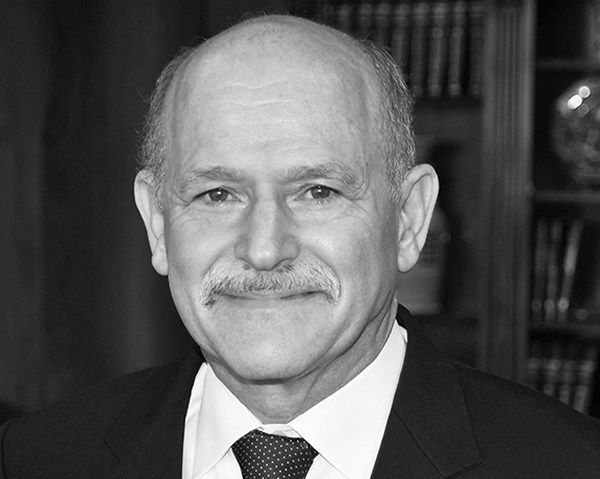LSU Scientist Works with Amazon to Fight Obesity, Diabetes Using Smartphones and AI
September 20, 2022
One of Louisiana’s most prominent researchers, Dr. Steven Heymsfield at LSU’s Pennington Biomedical Research Center, or PBRC, was tapped by Amazon to improve the body composition component of their Halo app, launched in 2020, using smartphone photography and artificial intelligence, or AI. The collaboration brings affordability and ease to the fight against obesity and diabetes, at home and in clinics.

Dr. Steven Heymsfield at LSU’s Pennington Biomedical Research Center, or PBRC, is Louisiana’s only Amazon Scholar and the leading expert on body composition assessment in the world. He was among the first scientists to define BMI, body mass index.
– Photo: LSU
Two to three times per week, Dr. Steven Heymsfield meets with his collaborators at Amazon. Everyone in the group is an expert on computer vision—using AI to extract information from images—while Dr. Heymsfield is the only medical doctor. He was tapped to become an Amazon Scholar in 2021, the only such scholar in Louisiana, to help improve their Halo health and wellness tracker, which has several components, including for sleep and movement. The one Dr. Heymsfield is working on is called Body.
Before being contracted by Amazon, Dr. Heymsfield was already well aware of the need for new and better ways to measure human body composition, especially fat percentage, which can cause diseases that are leading causes of death in Louisiana and around the globe. After all, he was among the first scientists in the world to define body mass index, or BMI, which remains the most widely used tool to determine whether a person has obesity or not. The reason for BMI’s success is that it’s cheap and easy to use. It’s elementary math—a person’s weight in kilos divided by the square of their height in meters. But it’s far from perfect. An obese person and a body builder can easily share the same BMI, and an elderly person can have a healthy BMI even if they’ve lost a lot of muscle for which Dr. Heymsfield’s 1998 paper on sarcopenia, muscle loss due to aging, has been cited more than 4,400 times.
“What I see now is that AI and machine learning is going to sweep all that stuff away,” said Dr. Heymsfield about using BMI and traditional approaches, such as regression analysis and classical statistics, to query biomedical data from large and diverse groups of people. “My wife wants to kill me, but this fairly involved collaboration has turned out to be oddly rewarding and has given me new ideas for how we can better diagnose and treat people using AI.”
While the Amazon collaboration focused on how to accurately as well as quickly, easily and affordably measure body fat percentage, Dr. Heymsfield is continuing to explore ways to use smartphone photography and AI to measure muscle mass, which for him, is a new approach to a familiar topic.
“Steve Heymsfield is the leading expert on body composition assessment in the world and the technology he’s developing with Amazon is going to be transformative.”
Dr. Donna Ryan, world-renowned obesity expert and Pennington Biomedical Research Center professor emerita
Their mutual colleague Dr. Vivian Fonseca, professor of medicine and pharmacology and assistant dean for clinical research at Tulane University Health Sciences Center in New Orleans, agrees.

Amazon’s Halo Body app creates a 3D image of the user’s body based on 2D images taken with the device’s camera. It also estimates percent body fat, rounded to the nearest percentage.
“Currently available technology to measure body composition and fat percentage in our clinics is dual-energy X-ray absorptiometry, or DXA, and computed tomography, which are expensive and expose one to X-rays; air displacement plethysmography, which is cumbersome; bioelectrical impedance analysis, like smart scales, and calipers that pinch the skin, which all tend to be inaccurate; or taping, which is difficult to train people to do,” Dr. Fonseca said. “Meanwhile, the technology LSU Pennington’s Dr. Heymsfield is developing with Amazon is easy and inexpensive and could be used day-to-day. It will transform medical practice.”
“In Louisiana, because of our obesity problem, 14 percent of people have diabetes and 37 percent have prediabetes, so we need better tools to diagnose obesity,” Dr. Fonseca continued. “In five years, medical practices will use a tablet or smartphone in an exam room. It will take four scans to detect percent body fat. This will be the basis for the diagnosis of obesity, not BMI. I think this is coming within five years.”
Although Amazon requires the purchase and use of a Halo device to use its own proprietary technology, similar, AI-driven solutions are likely to reach the market soon, as more biomedical researchers become interested in AI and computer vision to diagnose various conditions, Dr. Heymsfield argues. He recently did a validation study of the Halo Body technology to measure body fat in partnership with Amazon and Harvard Medical School. Although the study was limited, involving just 134 adults, the new technology outperformed all other methods to measure body fat, except DXA, to which it was comparable.
“I am thrilled to be working with computer vision experts on applications developed around AI that have the potential to reach many of the 2.5 billion smartphone users worldwide who previously had limited access to advanced healthcare technologies,” Dr. Heymsfield said.


